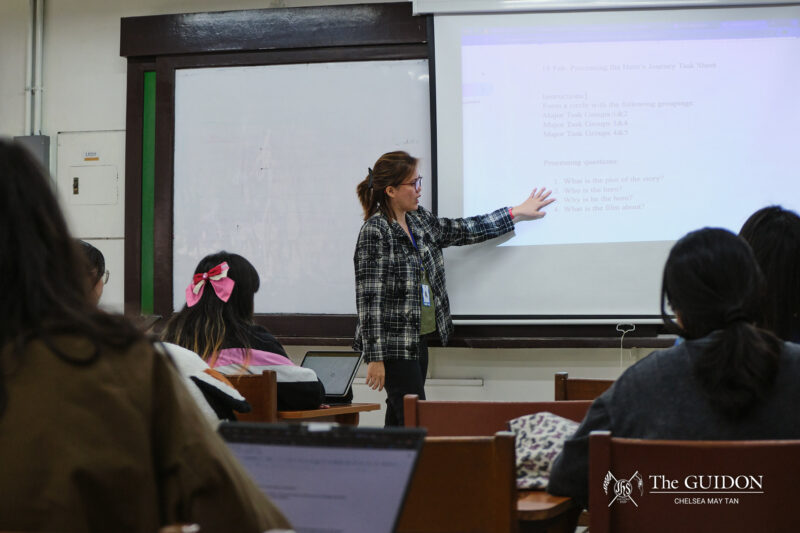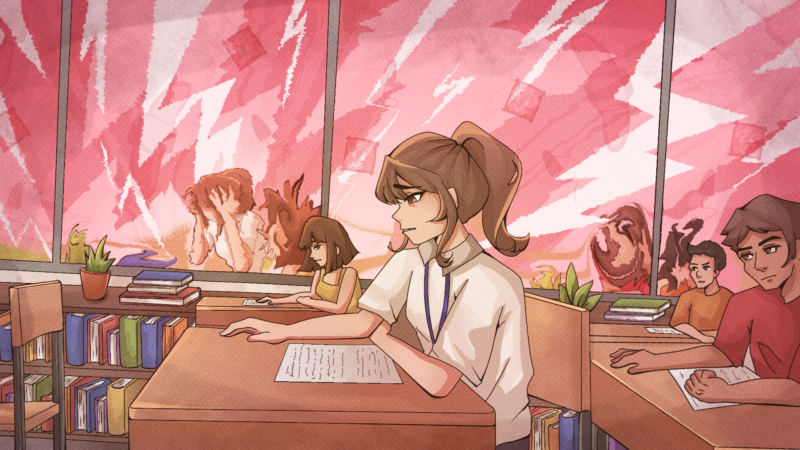One of the staples of the Ateneo culture is serving communities outside of it. In the case of the Office for Social Concern and Involvement’s (OSCI’s) Integrated Non-Academic Formation program, forms of community service may range from arranging cans in a grocery to visiting the kids at Boys Town.
In the Ateneo’s National Service Training Program (NSTP), sophomores either teach elementary students how to read and write, or help build houses.
But, at what cost should the typical Atenean serve?
For some students, NSTP feels burdensome because they have to pay transportation fees as high as P100. For others, NSTP means dealing with angry members of the community without the help of their adviser or formator.
With these practices, some NSTP students feel that the price of serving has become more than they bargained for.
Tracing roots
As defined by Republic Act 9163, NSTP “is a program aimed at enhancing civic consciousness and defense preparedness in the youth by developing the ethics of service and patriotism…” Aside from the Reserve Officers Training Corps (ROTC), NSTP involves the Literacy Training Service (LTS), where its students teach young public school students on how to read and write. It also involves the Civic Welfare Training Service Program (CWTS), where students participate in community development activities such as tree planting, house building, and feeding programs.
College students have been required to take it since 2002.
In the Ateneo, the OSCI handles NSTP. Students are required to take four units of the program, getting two units in each semester of sophomore year.
According to NSTP Coordinator and Team Leader Maria Flor Soriano, NSTP in the Ateneo was known as the Expanded ROTC. But, when the said act was implemented, the school further classified Expanded ROTC’s components into LTS, CWTS, and ROTC itself.
LTS and CTWS used to be offered to only 150 students each. But when the law was passed, the Ateneo increased its capacity to 900 each, as well as the number of the formators that would help the students. The students’ parents, however, insisted that both LTS and CWTS shouldn’t be limited to just 900 per class. According to them, the Ateneo restricted the NSTP options that the students have.
NSTP then became NSTP-PLUS (Preparatory Leadership Undertaking for Sophomores) after OSCI conducted focus group discussions and evaluated the students’ feedback. According to OSCI’s NSTP-PLUS Multiply site, the “PLUS” part was added to emphasize how the Ateneo prepares its students to become and act like leaders of the community.
Offices like the Associate Dean for Student Affairs, Loyola Schools Guidance Office, and the Campus Ministry Office work together with OSCI under the said system.
Service for a price
For some students, however, the desire to serve a particular community is overshadowed by the problems they encountered while on NSTP.
Edson Sy (IV BS LM) doesn’t understand how he got his grade in NSTP during the second semester. Although he attended all of NSTP’s activities and actively participated in them, he still got a C.
“I didn’t bother to ask my formator on why I got a C because I got shy,” he says in Filipino. “But it’s unfair, especially when I exert extra effort for my tutees then I see my classmates make fun of the other kids.”
Some students still raised complaints even with the newly implemented NSTP-PLUS. One major concern is the amount they have to pay in addition to what they already paid during enrollment. These fees vary according to where the students’ area insertions will be held.
According to Rico*, who is assigned to an afternoon NSTP Pathways class held in Quirino, he and his block mates were not informed that they’d have to pay the P32 fare. They just found out during their first area insertion. For Rico, who says his money isn’t usually kept in small bills, it was a problem. Thus, he had to borrow from his classmates.
Meanwhile, Kiara Lagrisola (II AB PoS) thinks it’s unfair that students pay varying transportation fees. While she and her classmates only pay P36 for a two-way ride to Project 8 in Quezon City, others have to pay as much as P95.
Also, when she and her classmates had their make-up insertion at Gawad Kalinga (GK) Molave in Payatas, she had to pay P85— more than double of what she usually pays.
“It’s not fair [because] some students are required to pay more than other students,” says Lagrisola. “The [transportation] fares should be made uniform. If it’s possible to get the fares from the tuition, that’ll be great.”
Another concern is the lack of time some students have in getting to their meeting point from their Saturday classes. For Rico and his classmates, they don’t have time to rest and have lunch because their jeep leaves 15 minutes after their Saturday morning class ends.
Also, students like Michael Huelsmann (II AB Eu) prefer that their formators stay with them during their insertion. “[Having the formators there] makes you feel safer in a way,” he says.
Soriano explains that they currently follow the zoning method. This means that each formator is assigned to a place where certain areas of insertion are near to each other. These places include, among others, Marikina and Quezon City, as well as Montalban.
Under this method, each formator spends the entire Saturday visiting the said areas. This is when they would make sure that things are running smoothly, not only between the students and the community, but also among the community members themselves.
With the formators absent, the students and their tutees compete with the noise that kids outside of the community create. The presence of unruly kids who disrupt the class are often talked about in processing sessions, says Huelsmann. There are also other members of the community who are unwelcoming toward the NSTP classes.
In Lagrisola’s case, she and her classmates weren’t warmly welcomed by their GK community. She says that, apparently, there were some members who were against the entire GK set-up. It even came to a point where one homeowner shouted at her classmate.
“But, we were able to fix it [immediately],” she says.
Subsidized
These complaints are nothing new to OSCI. According to Soriano, her office is currently coordinating with the Sanggunian, especially regarding the transportation fees.
She also says that students can avail themselves of discounts just by going to the office. According to her, students can get as much as their entire fees covered after presenting their letters of intent. Meanwhile, scholars automatically get their fees fully subsidized.
Soriano says, however, that the only problem with this set-up is that students do not immediately claim their money at the office. For these students, this is because they don’t have the time to drop by OSCI to do so.
Also, these fees are not part of the students’ tuition fees because they are not part of the office’s operational expenses. According to Soriano, the students’ tuition fees only cover the said expenses, which include the formators’ transportation fees in getting to and from their areas of insertion.
OSCI has also taken measures to solve the uneven formator to class ratio. OSCI has sought the help of non-governmental organizations (NGOs) and former NSTP students. According to Soriano, OSCI carefully selects which NGO to partner with since there are phony orgs whose only aim is to earn money for themselves. As for NSTP students, it either invites them or accepts their offer.
NSTP = fun
For Committee on Non-Academic Formation NSTP Representative Christine Aw (II BS LM), students might think NSTP is a burden because it wasn’t clear to them why they’re helping their respective communities.
It’s also probably because students focus too much on reaching the program’s grade requirements.
To remedy this problem, Aw suggests that it might be helpful for OSCI to market NSTP as fun and friendlier-looking. Although it can’t be avoided for OSCI to grade much of its requirements, she believes that it be less strict, especially in grading the students.
That way, NSTP students don’t see serving the community only as burdensome.
“Kapag in-attach mo siya, ‘Eto, may points ‘to e…’ parang lahat na lang nagiging connected sa grades (If you attach NSTP to the number of points you have to get in each requirement, everything just becomes connected to the grades),” says Aw.
Despite these problems, some NSTP students still find their experience fun and worthwhile.
According to Huelsmann, most of the concerns he and his batchmates had weren’t felt that much because his block’s class was fun. Despite only using pen and paper to teach his student, he says that much can still be taught and learned.
“While it may be true that [the other] students have more teaching materials in handling grades one to three students [compared to our block], I never thought about it that way,” he says in Filipino. “I find myself lucky [because] it wasn’t [too much of] a hassle to go to NSTP.”
“My block [is] as fun as I think it can get.”
*Name has been changed to protect the individual.






